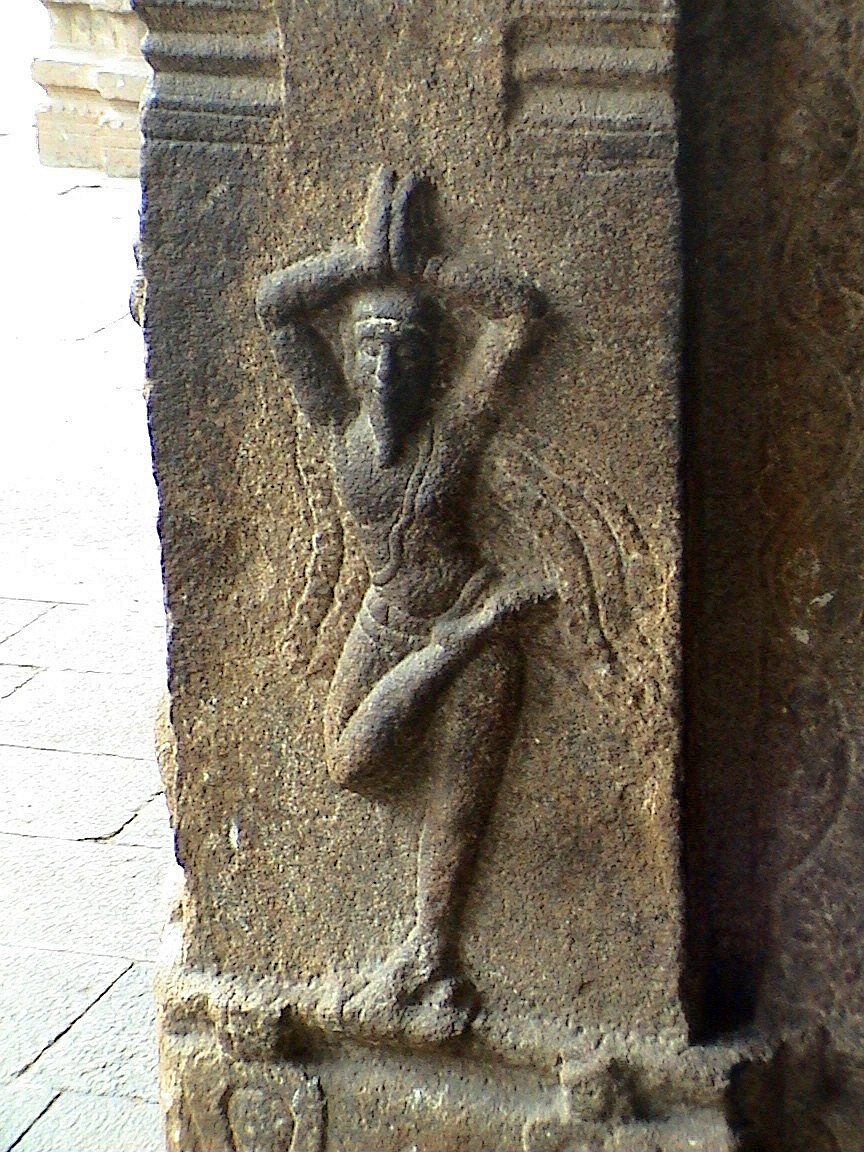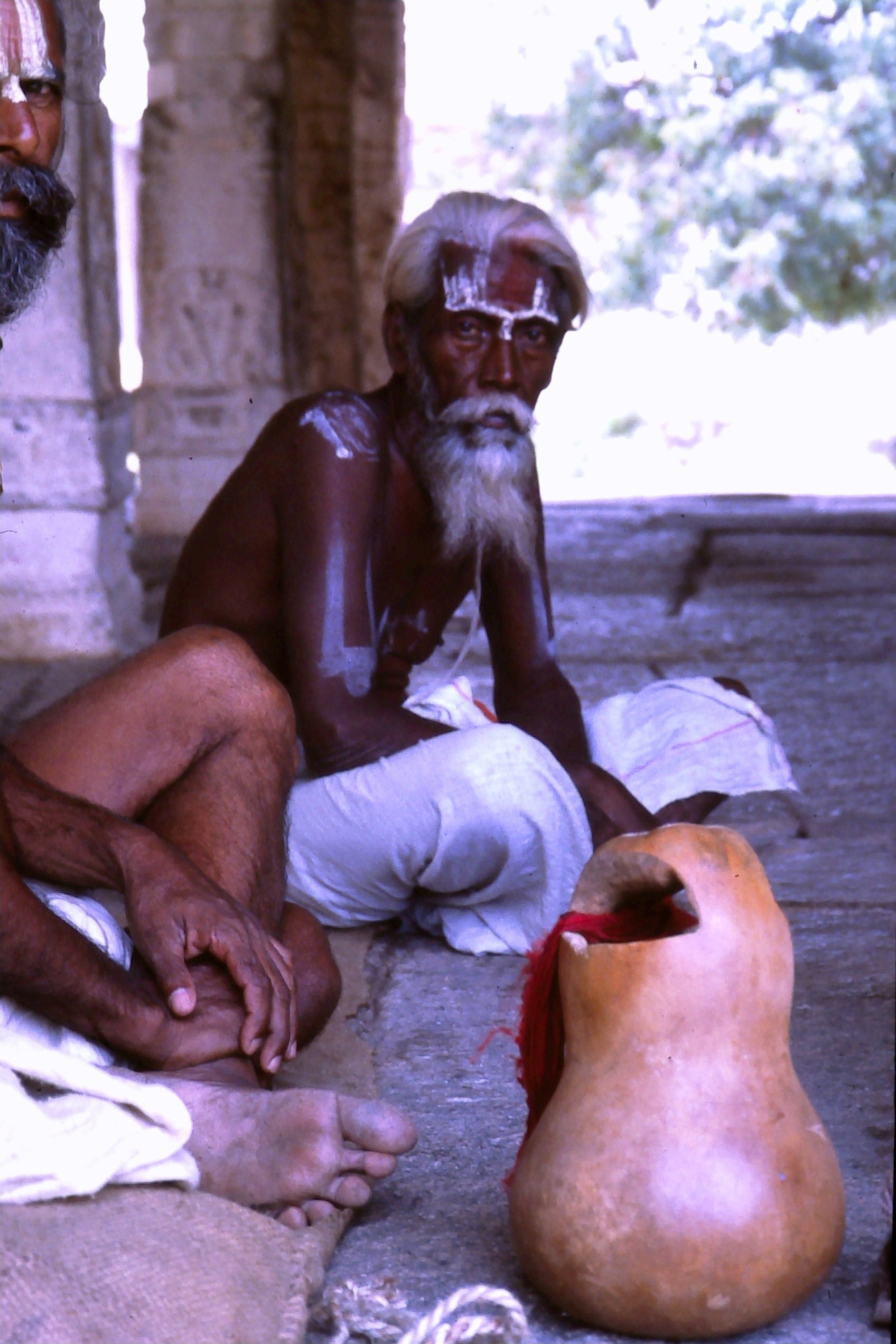The words yama and niyama take their origin from Patanjali’s Yoga Sutras [more specifically sutra 2:29]. They are the first two limbs of the eight-limbed (ashtanga) raja yoga which Patanjali describes [see: Saraswati 185]. Swami Satyananda Saraswati translates these two words as referring to sets of “self restraints” and “fixed rules” respectively. Farhi describes the yamas and niyamas as being “given as uncompromising, universal truths to be practiced regardless of our race, country, class, or circumstance” (2004:35). Thus the implication is that rather than being a rigid set of “do’s and don’ts”, they are instead behaviours and habits to be adopted at all times, allowing for a state of yoga (mind free of fluctuation) both on and off of a mat.
Despite being the first two limbs of raja yoga these two are often superseded during what North Americans would conceptualize as a yoga class, by pranayama and asana [which are generally taught as breathing techniques and poses, but perhaps more accurately translated as “life energy control” and “comfortable posture” ]. It should be noted that as Maehle points out, when it comes to yoga treatise, “some sources [omit the first] two limbs, the ethics.” Later on, teachers argued that they should be included, as ethics (particularly the fifth niyama) are necessary for achieving samadhi [the eighth limb] (Maehle, 212). Gates also mentions a more complimentary and interplaying role between the eight limbs, suggesting that yama and niyama are more like “spokes on a wheel [than] rungs on a ladder” (Gates et al. 6).
Unlike many religious doctrines which prescribe a set of morals, yama and niyama establish a set of guidelines. As yoga by definition is the cessation of mind fluxation, it is more relevant to understand yama and niyama as the guidelines for not causing fluxations in the minds of others or one’s self. They encourage a harmonious relationship with the atman [monistic consciousness]. Rather than serving as a litmus test for “good and bad”, they foster awareness for the karmic consequences of one’s actions.
The implication of yama and niyama as necessary and adopted disciplines is taken to a further extent by Saraswati who, in reference to bahiranga [These are limbs of yoga which are “exoteric” or of the “external element”, “practiced with objects outside, in relation to the body”. They include: yama and niyama, as well as pranayama, asana, and pratyahara (See: Saraswati 185)] says that “the preliminary part of raja yoga must be practiced in the presence of a group with whom the aspirant must live for some time. When the mind is set into a pattern, [the yogi] can go back to society and live with people” (Saraswati 186). [Please note that to avoid over-repetition, the word “yogi” is used to represent both male and female practitioners throughout this article] This is of course more in line with the traditional study of yoga under a guru.
Taking a less rigid stance, Bell refers to the yamas and niyamas as “guidelines, a framework from which we can begin a process of inquiry.” She goes on to say that “they are not commandments, nor are they intended to be followed mechanically” (Bell: 42). Later on she suggests that “the yamas and niyamas are not intended to be unbending law [but rather] life long practices” and encourages striving towards continual on-going practice, rather than sequestered mastery (Bell: 47).
While the prescribed rigor of learning yama and niyama can vary by teacher, it would be generally agreed upon that these first two limbs form what Farhi describes as “yogic precepts for ethical living” (2006: 11). Farhi goes on to make a distinction between the two stating that yamas are “constraints that [yogis] observe in relationship to the world” and niyamas are “concerned with [a yogi’s] relationship to self and how [they] live when no one else is watching”. Put succinctly, yamas provide instructions on how to be at harmony with the world and niyamas harmony with oneself.
There are 5 yamas and 5 niyamas. The first yama is ahimsa. This word comes from the Sanskrit words a (prefix meaning “not”) and himsa (“harming, injuring, killing, or doing violence”) [The etymologies of these sections are taken from Sovik 43 & 46, except where noted]. It is also commonly read-in (as it is in a host of commentaries on the yoga sutra 2:35) that ahimsa necessitates and leads to compassion towards every living being. [See Farhi 2004: 35]. While it would be easy to think of ahimsa as simply an outward behaviour, it implies a compassionate attitude towards oneself as well. For example, suicide or self-mutilation are violent acts, and show neither compassion for oneself nor those who would cope with the ramifications of them. It can be further expanded to say that ahimsa discourages other acts which are not necessarily violent, but can most definitely be harmful. Exclusion, like that of the mother-in-law whose invitation to a family event was “forgotten”, is an example of this. This act would be lacking in compassion and potentially harmful to the mother-in-law who discovers this, or the grandchild who misses the grandparent.
The second yama is satya from the Sanskrit for “that which exists or that which is,” and is commonly termed “truthfulness”. The practice of satya involves reporting and perceiving things only as they are, rather than how they relate to an ideal. Chopra describes this concept as “separating your observations from your interpretations” (Chopra 33). For example, a university student may become frustrated with a new professor whose teaching style is underdeveloped. A factual observation in this instance would be “the professor is a novice to teaching.” The insinuating interpretation is “this is a bad professor.” The student might go on to tell peers to avoid classes with that same professor because they are “bad”. This causes disharmony between the professor and potential students. Maehle notes that satya immediately follows ahimsa, placing non-violence in higher priority than truthfulness, because “we should never use truthfulness to harm or violate others” (Maehle 213). Satya inherently expresses the concept of being non-judgemental. A magazine might edit their photos. The editors have determined that a model can be more aesthetically pleasing if altered, thereby passing on the interpretation that real images are undesirable. This may cause its readers to develop negative body-image and/or eating disorders. This is not to say that truth is always more pleasant; in fact the avoidance of unpleasant truths can be even more unpleasant. A woman finds a lump in her breast but ignores it, because she can not accept the possibility she has cancer. When truths or realities are disregarded, destructive behaviours ensue.
The third yama is asteya which translates directly as “non-stealing”. Oversimplification would demand defining the act of stealing as taking something tangible which does not belong to us. Shoplifting or stealing a lunch from the fridge at work are examples of this. Other acts of theft such as plagiarism, or pirating mp3’s, where the objects stolen are less tangible, are also to be avoided. The principle of asteya can also be applied to more abstract concepts such as time or concentration. Being late for a meeting can be seen as stealing time from other attendees. Dominating a conversation, or interrupting someone who is speaking, or reading, or meditating, can also be perceived as acts of theft, as they consume their victims’ mental energies.
The fourth and quite possibly most debated yama is bramacharya. Sovik loosely translates bramacharya as “moderating the senses and walking in God-consciousness.” Usually associated with sexuality, the controversy of this yama can be seen in Sovik’s complete absence of direct references to sexuality in his translation. Farhi avoids both divine and sexual inferences using instead “moderation in all our actions” (2006: 94). [Chopra provides some possible etymology as thus: brahman (“unity consciousness”) and achara (“pathway”), or charya (“grazing”) (Chopra 34)]
When it is considered that the yoga sutras are believed to be but a compilation of practices divinely revealed to the risis, many of whom had several wives and children, it could be construed that here, brahman, refers to the consciousness (Maehle 215), and not the god. However, given that the yoga sutras were written long after the Vedic period, Patanjali might not have intended this, as he would have used the word “atman” instead.
Thus, the concept of bramacharya is translated and taught on spectrum ranging from the conservative “sexual abstinence” (Saraswati 197), to the more liberal ideas of Maehle: “Partnership is used in yoga to recognize the inherent divinity in the other. This does exclude casual sex… The yogic view of a relationship is not to consume another person like an object” (Maehle 214). The ensuing arguments are that casual sex is either: a violent act, or a theft act. As a violent act one partner perceives more of an emotional involvement, and is left hurt when that is found to be untrue. As a theft act, both partners are distracting each other from the true nature of each partner involved. Perhaps they just need friendship, or have problems with intimacy because of a previous violent act. Either way it is very taboo. It is perhaps easier to evaluate the practice of this yama by first using the first three to evaluate potential actions of a more intimate nature.
The final yama is aparigraha. This word comes from graha (“to grasp”), and
pari (“things”). Thus, aparigraha can be said to be “not grasping things” or being “non-possessive”, or practising “non-attachment”. As a matter of necessity, yoga aims for liberation (moksa). A mind which harbours attachment or possessiveness to an object (or person for that matter) is on some level chained to it, whether through the need to protect it, or a dependency on it. The mind becomes distracted by the need to own material objects, or exert some form of dominance over others. This yama encourages generosity and material minimalism. Saraswati tells of some yogis who “do not even touch fire and have only one set of clothes. They do not stay in one place. Their mind is so free and relaxed and they are always ready to do any duty anywhere” (Saraswati 199). Sannyasis (renunciates) can be said to be masters of non-attachment.
The first niyama is sauca or which means “purification” or “cleanliness”. It refers to a number of techniques such as sat karmas (cleansing actions) used to keep the body clean. It necessitates the eating of proper foods (those which are natural and pure) and thinking proper thoughts (achieved by being selective about what one allows the mind to be exposed to). We are constantly taking in things around us, whether in the form of air, nourishment, or sensory stimuli. As certain foods can alter the mood (coffee, chocolate, excess sugars, etc.), a balanced diet is encouraged to avoid these mood-swings. Some yogic schools of thought prescribe a vegan diet, for example. Selectively choosing which movies we see, music we listen to, and conversations we engage in, can also help avoid mental imbalance. For example, violent films or hateful music can encourage violent behaviours or prejudice. An argument can cause us to lose sight of the way someone is naturally, and cause us to see them as an enemy, or opposing force.
The second niyama is santosa or (from the Sanskrit “contentment, delight, happiness, joy”). It can be thought of as closely associated with aparigraha. It is practiced by simply accepting one’s true self, and one’s status in the world (Sovik 46). For example, a sudra who is trying to act as a ksatriya is not accepting their status in the world. They are attached to a caste which is not theirs, and thus not able to be content with their role in the world. A person expecting to return to work right away after a major surgery might not be content with their status as a patient. Santosa is not merely seeing the glass as half-full, it is reacting to even an empty glass as enjoyable, the need to walk to the water cooler to refill it as enjoyable, and the availability of water as enjoyable, even if there is an insect in it. It is the acceptance of mistakes made in the past without self-hatred or self-judgement. It is the abolition of desire to be wealthier, smarter, stronger, or more powerful. It is the apex of equanimity with the good and bad that life delivers.
The third niyama is tapas (“heat”). It refers to the heat that builds during a concerted effort. (Sovik 46) It is also thought of as encouraging austerity. There are going to be challenges and distractions that arise to one’s practice of yoga. Tapas is the resilience to remain dedicated to one’s practice regardless of adversity. It is the key ethical tool used to build sadhana. [Sadhana is the “program” one makes for spiritual development. It varies by individual. It consists of any practice, ritual, rite, or study undertaken with moksa (liberation) as the intent.] Tapas is expressed in the adage, “if at first you don’t succeed, try, try again”.
The fourth niyama is svadhyaya. Maehle points out that according to Vyasa it is chanting Om and moksa sastra [reading scripture to do with liberation] (Maehle 217). Sovik takes a more relaxed approach, saying that reading any literature which encourages or inspires one to develop spiritually is svadhyaya (Sovik 46). It is the removal of samskaras and separation from asmita [Asmita is the “I” or the perception “self” created through the samskaras (psychic lenses/citta vrttis), which separate the aspirant/yogi from the atman]. It is the primary focus of jnana yogis [Jnana yoga is the study of knowledge, more specifically, knowledge which is of a transcendental or divine nature]. It is the study of what remains after all elements of ego are removed.
The final niyama is isvara pranidhana. Isvara refers to “the divine” whether in the form of the nirguna brahman (universal consciousness), or any other deity (Maehle 217). Pranidhana literally means “to surrender” (Sovik 46). This surrender does not refer to some kind of submission to the cosmos, but rather, the active giving of permission to oneself to be present in the universe; to be aware of, and part of a greater whole. It is the acceptance that there is a higher power which is not completely independent of the yogi. Lastly, it is the devotion of all action (and thought) to that higher power. Patanjali points out that practice of this niyama is necessary to achieve samadhi, as it defines the end goal of sadhana (sutra 1:29).
References and Further Recommended Reading
Bell, Charlotte and Rolf Sovik (March/April 2008). “The Forgotten Teachings – Patanjali’s 10 Steps to a Happier Life.” Yoga and Joyful Living, [100], 40-47
Chopra, Deepak, and David Simon (2004) The Seven Spiritual Laws of Yoga. Hoboken, New Jersey: John Wiley & Sons, Inc.
Farhi, Donna (2004) Bringing Yoga to Life. San Francisco: Harper-Collins Publishers
Farhi, Donna (2006) Teaching Yoga. Berkeley: Rodmell Press
Gates, Rolf et al. (2002) Meditations from the Mat – Daily Reflections on the Path of Yoga. New York: Anchor Books.
Maehle, Gregor (2006) Ashtanga Yoga – Practice and Philosophy. Novato, California: New World Library
Swami Satyananda Sawaswati (1976) Four Chapters on Freedom. Munger, Bihar, India: Yoga Publications Trust
Recommended Readings
Any number of commentaries on Patanjali’s Yoga Sutras.
Related Topics
Purusha Pramana
Vritti Parinama
Dharmi Raja Yoga
Bihar Yoga Jnana Yoga
Satayanda Yoga Ekagrata
Ahankara Tattva
Asrama
Useful Websites
www.dharmi.com
www.yogavision.net
http://www.swamij.com/yoga-sutras.htm
Article written by Michael Smith (March 2008) who is solely responsible for its content.







